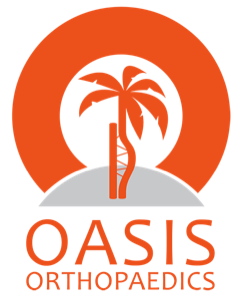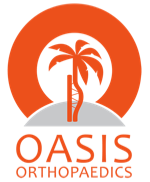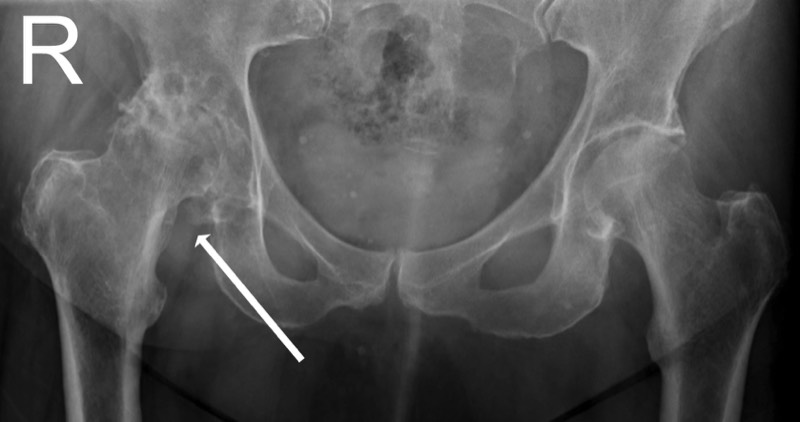
700 Glenhuntly Road
Caulfield VIC 3162
03 9044 4555

700 Glenhuntly Road
Caulfield VIC 3162
03 9044 4555
Hip Arthritis
Any condition that causes the slippery cartilage surfaces to break down and no longer glide smoothly will result in a painful, stiff hip joint if it doesn’t glide smoothly. This may catch or have a grating sensation from time to time, and even occasionally make an unusual click. In the human body, this leads to the symptoms of arthritis pain and stiffness in the groin, lower back, thigh, or even the buttock. Occasionally an arthritic hip may lead to pain in the knee. This is called referred pain, and is especially common in children’s hip problems. There are a large variety of causes for hip cartilage to break down and the joint to become arthritic, but the end result is essentially the same.
As a result of the cartilage breaking down, the space between the bones, normally made up by the cartilage and synovial fluid, breaks down and becomes narrow. The body attempts to “heal” itself and so it will often form large spurs of bone, the capsule of the joint will become thickened with inflammation, and small pockets (cysts) may form in the surrounding bone. These are the hallmarks of all types of arthritis.
The diagnosis is made by taking a history and performing a physical examination. More often than not, this information provides the majority of the clues to the diagnosis. Almost always, a simple set of X-rays of the hip and pelvis will then be used to confirm the diagnosis, and can also be used to better examine the severity of disease, as well as plan any surgery if required.
As a result of the cartilage breaking down, the space between the bones, normally made up by the cartilage and synovial fluid, breaks down and becomes narrow. The body attempts to “heal” itself and so it will often form large spurs of bone, the capsule of the joint will become thickened with inflammation, and small pockets (cysts) may form in the surrounding bone. These are the hallmarks of all types of arthritis.
Diagnosis
The diagnosis is made by taking a history and performing a physical examination. More often than not, this information provides the majority of the clues to the diagnosis. Almost always, a simple set of X-rays of the hip and pelvis will then be used to confirm the diagnosis, and can also be used to better examine the severity of disease, as well as plan any surgery if required.

Osteoarthritis of the right hip
Natural History
If left untreated, unfortunately, osteoarthritis of the hip does not get better by itself and does not “heal” on its own. There will be periods where the symptoms may get better for a while (e.g. in warmer weather or with less activity), but invariably it will deteriorate again and gradually the pain will increase in severity or frequency, as will limping and stiffness.
Non Operative Treatment
In most cases, non-operative treatment should be trialled before undergoing hip surgery. This initially involves modifying your lifestyle to accommodate your abilities – e.g. cutting back on sports, walking shorter distances if possible, carrying lighter weights. Losing weight may be helpful if necessary as this also helps take the load off the damaged weight-bearing joints. After this, oral medications such as paracetamol (Panadol/Panadol Osteo), anti-inflammatories (Ibuprofen, Indomethacin, Meloxicam, Diclofenac), and opiate-based medications (Codiene, Oxycodone) can be used to help reduce any pain. Some patients may be willing to use a walking stick, although this may be considered less socially acceptable in the 21st century, it is still a reliable and effective means of managing an arthritic joint in the leg. Some patients may find hydrotherapy and physiotherapy techniques useful to manage pain, reduce stiffness, maintain muscle bulk and whatever flexibility their joints may have, as well as keeping their weight under control.
Operative Treatment
When the symptoms from the arthritic hip joint are no longer tolerable or manageable by non-operative methods, then you may wish to consider surgical treatment. For hip arthritis, the most reliable and enduring procedure in the overwhelming majority of cases will be a form of hip replacement (or hip resurfacing – in younger male patients with strong bone). The nature and method of hip replacement/resurfacing may vary considerably between various surgeons or even within a single surgeon’s practice (e.g. the same surgeon may use hip replacement Type A for younger patients and Type B for older patients, or alternatively these may vary depending on the patient’s anatomy or the underlying cause of the arthritis, for instance). Discussion of the various types and techniques of total hip replacement is best discussed on an individual basis with your own surgeon as there is no single “best” type of hip replacement or “best” way to perform this procedure. Rather the decision is made on an individualised case by case basis.
There are a few rare instances where total hip replacement/resurfacing may not be the best surgical option for a patient with hip arthritis. In much younger patients it may be worth considering fusing the hip joint – i.e. making it completely rigid and painless by performing an operation on the two bones in the hip joint to bond into one. The lack of movement across painful irregular surfaces removes the pain. The stiffness can be managed only if the spine and the knee above the diseased hip is flexible, and usually this would only be recommended in very young patients. This is mainly because it tends to preserve the amount of bone, which makes it easier to return in the patients later years to “take down” the fusion and convert it into a more “traditional” hip replacement if the need should arise. It is worth noting that this technique is much less common these days than two or three generations ago, but it is still being done around the world and in much younger patients.
The information above is general. All surgical procedures involve some risk. If you would like advice on your specific condition, please contact Oasis Orthopaedics to make an appointment with one of our specialists.
